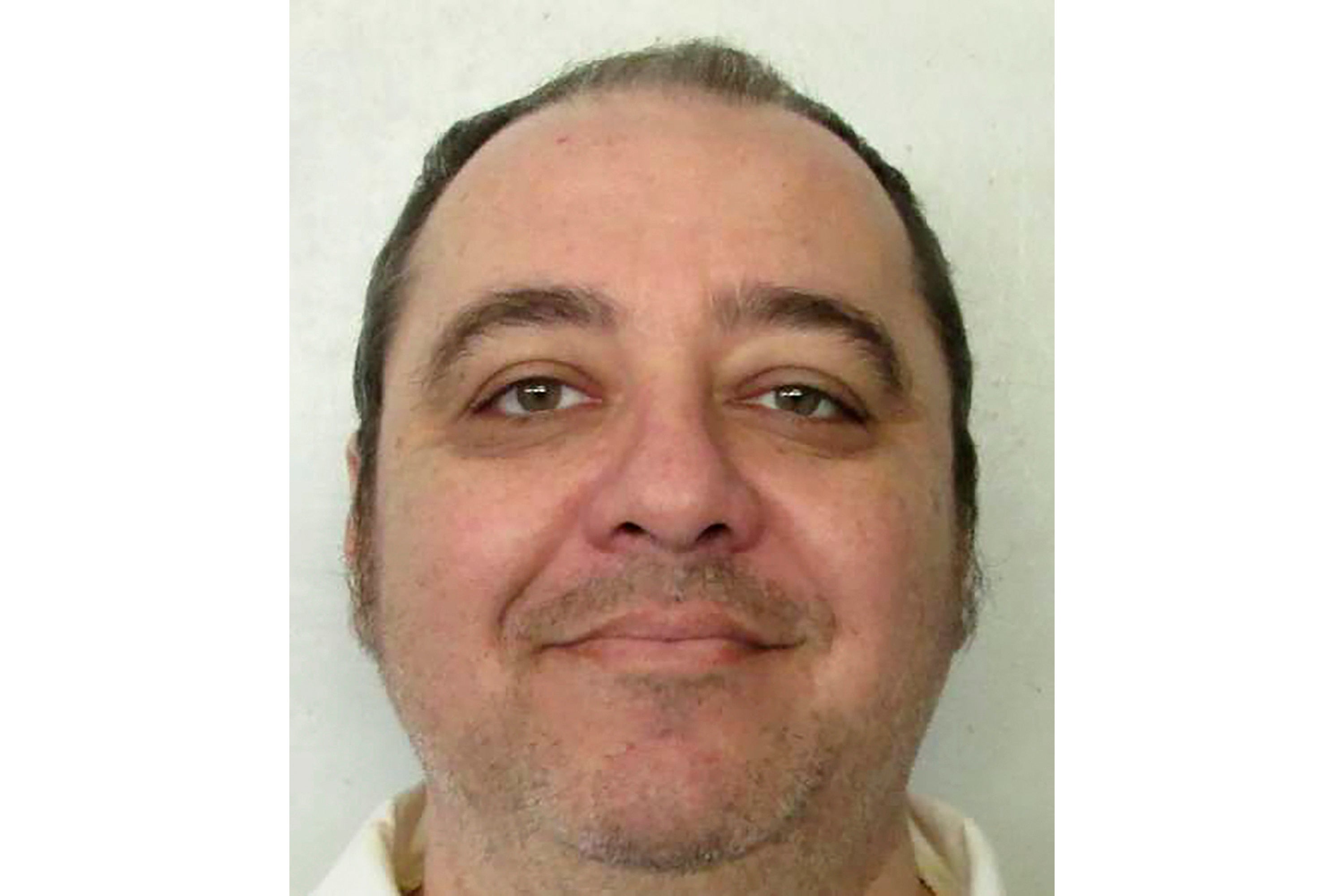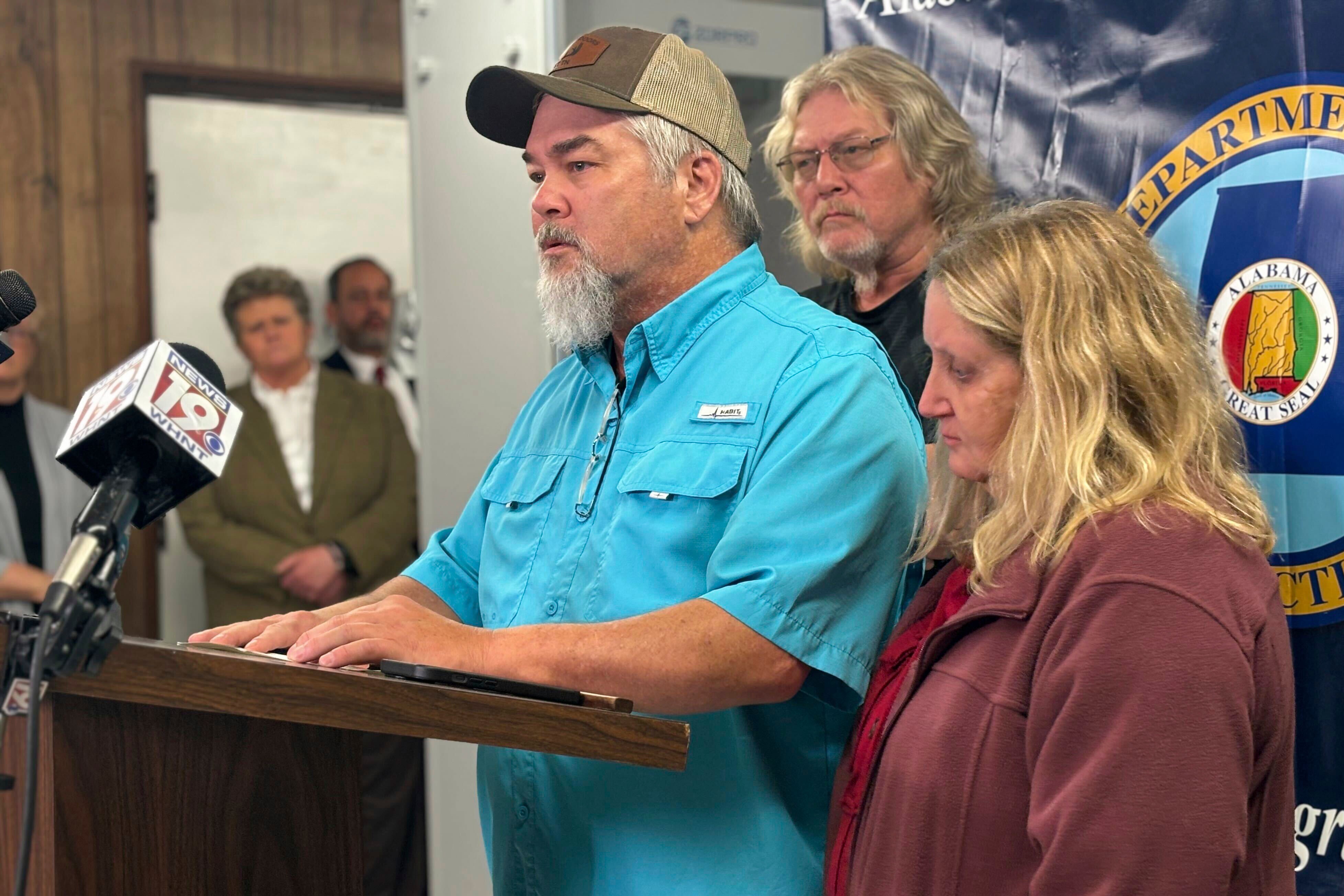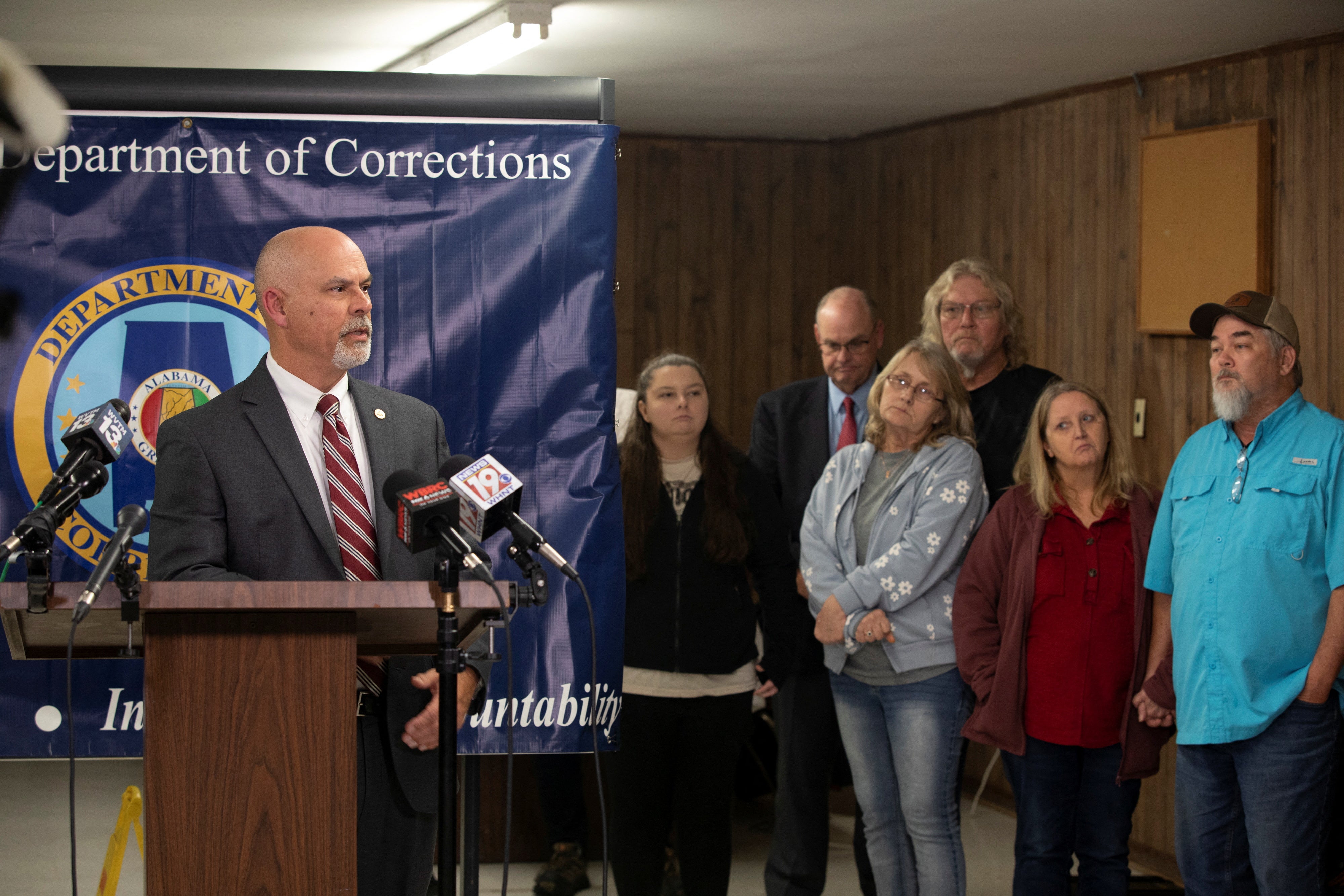Alabama execution: Kenneth Smith killed by nitrogen gas in first death row case of its kind
Kenneth Smith was said to have thrashed violently and repeatedly gasped for air during the 22-minute execution watched by his family
Convicted murderer Kenneth Smith thrashed violently and repeatedly gasped for air during a 22-minute execution as he became the first inmate to be put to death with nitrogen gas.
The 58-year-old was strapped to a gurney and fitted with a mask and a breathing tube that controlled the gas, slowly depriving him of oxygen, at William C Holman prison in Atmore, Alabama last night.
Moments before the execution, he said: “Tonight, Alabama causes humanity to take a step backwards... Thank you for supporting me. Love you all”. He then turned to his family and signed the words “I love you”.
Journalists inside the room described how Smith appeared to struggle as he was put to death. Lee Hedgepeth said: “I’ve been to four previous executions and I’ve never seen a condemned inmate thrash in the way that Kenneth Smith reacted to the nitrogen gas.
“Kenny just began to gasp for air repeatedly and the execution took about 25 minutes total.”

Also present was the family of Smith’s victim, 45-year-old Elizabeth Sennett, who was brutally murdered in a $1,000 killing-for-hire job set up by her husband, Charles Sennett, who planned to collect the insurance money.
The execution comes as The Independent continues its campaign to end the death penalty, having exposed the shortcomings of capital punishment as an effective crime prevention tool and as a morally abhorrent act of violence by the state.
Alabama Governor Kay Ivey, who did not respond to a request to attend the execution, said: “On March 18, 1988, 45-year-old Elizabeth Sennett’s life was brutally taken from her by Kenneth Eugene Smith. After more than 30 years and attempt after attempt to game the system, Mr Smith has answered for his horrendous crimes.
“The execution was lawfully carried out by nitrogen hypoxia, the method previously requested by Mr Smith as an alternative to lethal injection. At long last, Mr Smith got what he asked for, and this case can finally be put to rest.

“I pray that Elizabeth Sennett’s family can receive closure after all these years dealing with that great loss.”
Before his execution, Smith was visited in prison by his wife and sons and was given a last meal of T-bone steak, hash browns, toast and eggs, which he reportedly hardly ate.
And despite late 11th-hour appeals made to stop the execution by the death row prisoner’s lawyers, who described it as cruel and experimental, the US Supreme Court declined, and Smith was led to the execution room where officials began administering the poisonous gas at 7.53pm.
The nitrogen flowed through a mask for around 15 minutes, said John Hamm, commissioner of the Alabama Department of Corrections. Media witnesses in the room described how Smith appeared conscious before shaking and writhing within the restraints on the gurney, and was breathing heavily.

Afterwards, Smith’s spiritual adviser, Reverend Dr Jeff Hood told reporters: “When they turned the nitrogen on, he [Smith] began to convulse, he popped up on the gurney over and over again, he shook the whole gurney,
“I could see the corrections officers, I think they were very surprised that this didn’t go smoothly – one of the state officials in the room was so nervous she was tap dancing.
‘(Smith) kept breathing for what could possibly be up to nine minutes, ten minutes, unbelievable evil was unleashed tonight in Alabama... that was torture.”
The use of nitrogen gas was the first time a new execution method had been used in the US since 1982.
It followed a previous attempt to execute Smith with lethal injection in 2022 that was called off because authorities could not connect intravenous lines into his system.
Smith claimed the experience left him with physical and psychological pain, including post-traumatic stress disorder.
The state had predicted that the nitrogen gas in the second execution attempt would cause unconsciousness within seconds and death within minutes.

But Rev Hood said: “We didn’t see somebody go unconscious in 30 seconds. What we saw was minutes of someone struggling for their life.”
Among those present at the execution were the sons of Smith’s victim. Afterwards, one of the sons, Chuck Sennett, told reporters he’d forgiven Smith, but said: “Kenneth Smith made some bad decisions 35 years ago and his debt was paid tonight.”
In the weeks leading up to his execution, Smith’s attorneys tried several last-ditch attempts to spare his life due to the risks associated with the new method.
In a federal appeal that made its way to the Supreme Court on Wednesday, justices were asked whether attempting a second execution on Smith would constitute “cruel and unusual punishments” under the Eighth and 14th Amendments of the US Constitution.
The court decided against intervening the day before Smith was put to death, as it did almost an hour over the scheduled time officials planned to administer the death penalty.
Earlier this month, a group of United Nations experts publicly stated they were alarmed at the thought of the state using the new method. The organisation said: “We are concerned that nitrogen hypoxia would result in a painful and humiliating death.”

Another group of experts, the American Veterinary Medical Association, revealed it did not use certain gases to euthanise specific mammals because they create an “anoxic environment that is distressing for some species”.
As part of its campaign to end the death penalty, The Independent has revealed how corrupt policing, racial bias, and federal law is sending people to death row at alarming rate. There are around 2,500 people on death row across America.
Smith’s crime saw him play a part in a three-person murder-for-hire team who stabbed Ms Sennett in 1988. It was believed that Ms Sennett’s debt-ridden husband, Charles, planned the murder to collect on her life insurance.
Mr Sennett killed himself days later – while the two other men were convicted. Billy Gray Williams was sentenced to life in prison without parole and died in 2020. John Forest Parker was executed via lethal injection in 2010.
Smith’s remains will be released to the Escambia County Coroner and taken to the Mobile Lab of the Department of Forensic Sciences for a postmortem examination.
Join our commenting forum
Join thought-provoking conversations, follow other Independent readers and see their replies
Comments
Bookmark popover
Removed from bookmarks